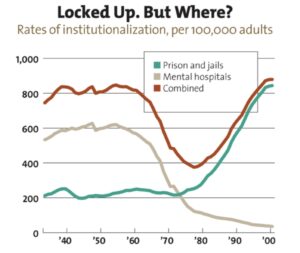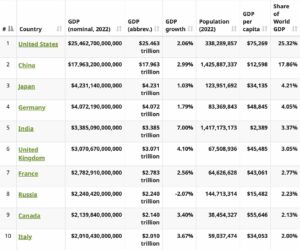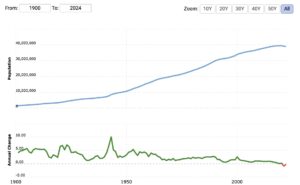“You get used to it after a little while – the smell of pee,” she said. “It just doesn’t bother me anymore.”
This is what my friend’s sister told me last week. She lives in San Francisco, and apparently she doesn’t mind the pungent scent of urine that coats nearly every square inch of the city.
I didn’t ask her about the feces that also seem to be spread across most of the downtown area. Maybe she doesn’t mind that either?
Perhaps she’s evolving backwards. Instead of being repulsed by the scent of urine and excrement – she’s becoming immune. What else is she becoming immune to?
For those of you who haven’t visited San Francisco, you probably think that this is an exaggeration. Most of the media already reports about the filth in SF, but unless you’ve actually been there, it’s almost unbelievable. And the crime is a serious problem too.
Nancy Pelosi, who serves as the Congresswoman representative for this area, has a building named after her right in SF. All of the employees that work in this building have been advised to work from home because of the skyrocketing crime.
But it’s not just San Francisco. It’s Seattle, Portland, Los Angeles, and San Diego. Basically every major city on the West Coast of the United States is disgusting and dangerous.
The West Keeps Kicking the Can
It’s clear by the way the world order is shifting that the West is soon in for a rude awakening. This happens to be most most noticeable on the West Coast of the US, where once great cities are visibly decaying.
This past weekend, I was in the Gaslamp District of San Diego. The last time I had been there was in 2019, right before the pandemic. It seemed like a different city.
One out of every five people I walked past on the street seemed to have a mental health problem. The homeless population in downtown San Diego is a serious issue. The same with every other West Coast US city.
I don’t say this casually. In my twenties, I was a professional firefighter in California. The vast majority of the emergency calls we responded to were for homeless individuals. Overdoses, fights, illnesses, and anything you can think of – we were the first line of people to deal with their needs. Understanding the issue, from the ground, gives some perspective on how deep the problem is… and it’s not an easy fix.
It’s estimated that approximately 26% of the homeless population has serious mental illness and another 37% has chronic substance abuse. The rest of the homeless population is made up of people going through hard times, or, by choice.
Our society is dealing with this problem by either enabling the problems that lead to homelessness, or sending these people to prison.

Source: Harcourt
The homeless population topic is a lightning rod for debates among the elites politicians. Their solutions, which range from offering subsidizing housing to free crack pipes, have all failed miserably.
Similar to the US federal government’s fiscal policy, many Western societies are in the bad habit of applying band aids instead of fixing the core problems.
The West is Too Soft
G. Michael Hopf sums up the West’s situation in his book, Those Who Remain, quite well:
Hard times create strong men. Strong men create good times. Good times create weak men. And, weak men create hard times.
The unfortunate reality is that we are on the last part of this cyclical trend. The part where our lazy reactions to real problems come back to bite us right in the butt.
To make things even worse, the last people to realize this perilous situation will be the West itself. Instead, Western societies are busy arguing amongst themselves about gender ideologies, speech censorship, and trying to manage the lives of others.
(As I like to say to my two children: Treat others how you want to be treated… and… Worry about yourself!)
Meanwhile, as the West pulls each other’s hair like two siblings in a spat, the rest of the world is looking on with raised eyebrows… and plotting their next moves.
But… The Numbers!
Despite the embarrassing and vulnerable situation that much to the West is in, the position is all relative.
The US is still the world leader when it comes to GDP, with the State of California projected to be the 4th largest economy in the world in 2023 (if it were its own country).

Source: WoM
From a company valuation standpoint, the US absolutely dominates the rest of the world. Nine out of 10 of the most valuable companies in the world are located in the US. Six out of those nine are located on the West Coast of the US (Tesla moved to Texas, from California, in 2021).

It’s incredible how such a relatively small area of the earth accounts for such a large portion of wealth creation. The state has attracted an incredible amount of intellectual capital, and has been a dream destination for many of the smartest and most successful people in the world.
It must be the weather…
The West Coast Was the Best Coast
As a born and raised Californian myself, I am clearly biased… but… I think California is the most beautiful place in the world. The Golden State has it all: beautiful coastline, amazing mountain ranges, vast ancient forests, incredible deserts, and everything in between.
There’s a reason why nearly 40 million people live there.
But, that’s changing…
For the first time in well over a century, the population in California has entered negative growth.

Source: Macrotrends
With the highest state income tax, the second highest gas tax, the second most expensive real estate market, and of course the most urine and feces covered downtown areas, it’s no wonder that people are leaving the state.
They’re migrating to many different states across the US, with Texas and Florida being the top destinations – both of which are zero income tax states. Texas has 300 Californians moving there per day!
So what’s going to happen to California and rest of the US West Coast?
Something Will Change
The stock market has performed surprisingly well so far in 2023. However, that positive performance is almost entirely due to 5 companies headquartered on the West Coast – Apple, Microsoft, Alphabet, Amazon, and NVIDIA.
Whether these companies have performed well due to the frenzy around AI, or because investors have chosen to back high growth companies is unknown. But what is certain is that most of these companies have valuations in the nosebleed territory. (NVIDIA is one of the most overbought stocks in the world, and has valuation multiples that surpass dot-com bubble levels.)
Any sort of meaningful pullback for these multi-trillion dollar companies could result in real impacts to the economies of the West Coast. When you add in the sky-high costs of living for this region and serious societal problems that plague the major cities, things start to look very precarious.
It’s certainly possible that the West Coast could navigate this high-risk situation. As a leader in technological innovation and ground zero for many civil rights movements, this area of the world is used to being on the bleeding edge.
However, as a rational investor, who looks for signs of risk and irregularities, your gut should be telling you something. When a city and community is visibly decaying, there is probably an underlying problem that needs to be corrected.
That’s why a lot of smart money has already left. They don’t like the smell of urine.




